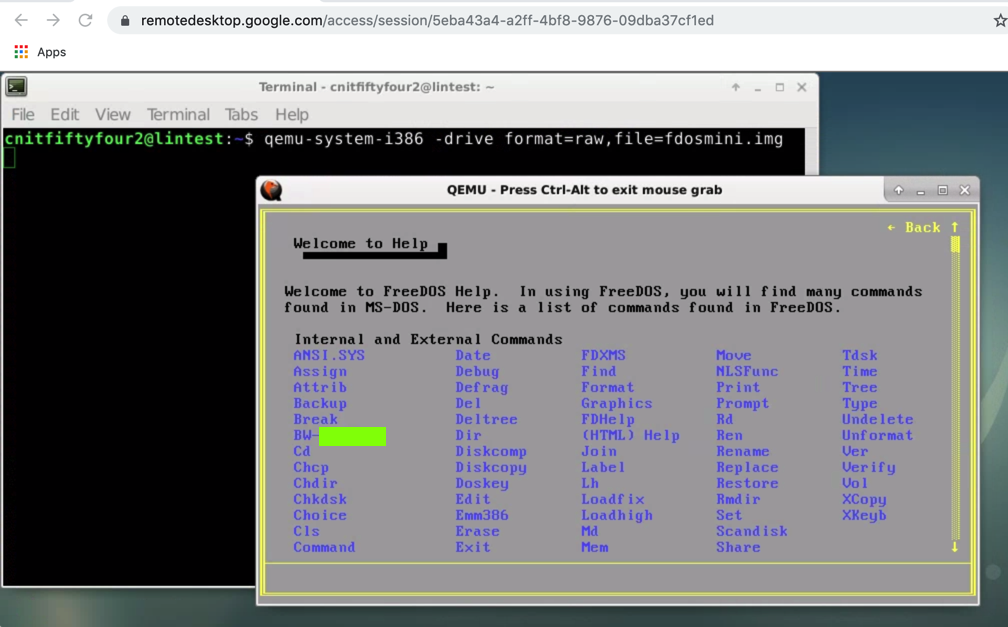
Well MS-DOS by itself isn't that useful, you may want to investigate network clients (ones that use TCP/IP are better!), sound settings and of course CD-ROM access. Qemu has various sound options, but for MS-DOS the best is to enable the PC-speaker, Adlib and SoundBlaster cards.įor reference, the BLASTER environment variable should be set to the following:īLASTER=A220 I5 D1 H5 P330 T5 Where to go from here In particular, note that the Unicore32 and lm32 guest support have been deprecated and will be removed in a future version.
#Qemu system i386 full
Consult the 'Deprecated Features' chapter of the QEMU System Emulation Users Guide for the full list of historically deprecated features/options. Qemu-system-i386 -hda msdos.disk -m 64 -L. System emulation Incompatible changes New deprecated options and features. Once it is installed, you can close Qemu. To boot it, open a new command prompt window, switch to your QEMU installation directory (e.g. You only have to do this twice, then MS-DOS is installed. My choice for this tutorial is debianwheezyamd64standard.qcow2, which contains a fresh installation of the standard Debian Wheezy system for x8664, available here. Find out what qemu-system-i386.exe is doing on your PC, and if it is safe and stable, detailed. Graphics Intel Iris Graphics 550 1536 MB. Clicca qui per sapere se qemu-system-i386 sicuro e come evitare errori del qemu-system-i386.exe. qemu-system-i386 quit unexpectedly when starting AVD (Android Virtual Device) The following crash report appears everytime I attempt to start any AVD on MacBookPro.

#Qemu system i386 windows
Remember it's control+alt+2 to get to the qemu console to change the floppy to dos622_2.img, then control+alt+1 to get back to the display to hit enter. What is qemu-system-i386.exe from qemu-system-i386.exe is part of QEMU. Windows 10/8/7/XP non ha bisogno di qemu-system-i386.exe. Let it have the whole disk, you just hit enter a few times, then qemu will reboot, then it will format the disk & then prompt for disk two. On the first boot, MS-DOS will partition the disk & slap down a MBR. Qemu-system-i386 -hda msdos.disk -m 64 -L. So there is no point in letting qemu grab 128mb of ram. MS-DOS himem.sys will only see a maximum of 64MB of ram. Also the installation, and all files will run on 8088/8086 or higher so you don't have to worry about any cpu flags.

MS-DOS uses the BIOS for all IO so the ISA/PCI thing doesn't matter.

I'm going to create a 2GB one, so the syntax is: The first step is to create a hard disk image.


 0 kommentar(er)
0 kommentar(er)
